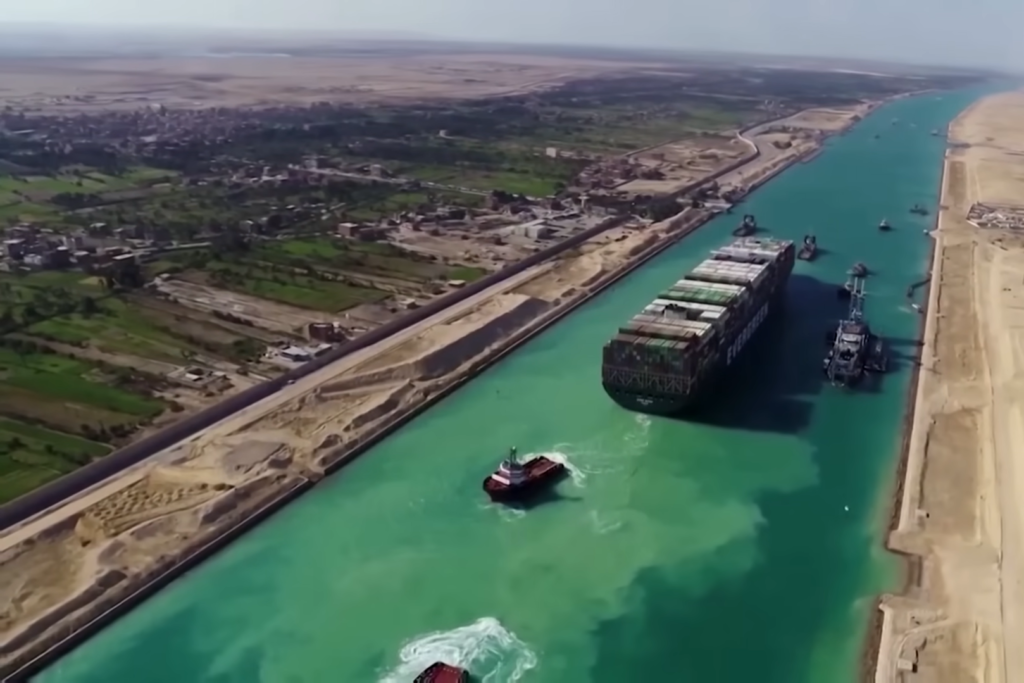The tensions in the Red Sea between the Iranian-backed Houthi militia and U.S.-led coalition forces have escalated into a high-stakes situation. With far-reaching implications for global trade and regional stability this conflict can turn into a crisis. As the Houthi Militia intensify attacks on commercial vessels transiting the strategic Bab el-Mandeb strait, the gateway to the Suez Canal, the United States has marshaled formidable military resources in a bid to secure this vital maritime choke point. However, the conflict has exposed a stark asymmetry in power dynamics, raising concerns about the potential for further escalation and economic disruption.
U.S Forces on Charge
The U.S. military has deployed an imposing array of naval assets, including the Eisenhower Carrier Strike Group, guided-missile submarines armed with Tomahawk cruise missiles. Along with that they have also deployed advanced aerial platforms like the lethal MQ-9 Reaper drones and F/A-18 fighter jets. This potent combination of air, sea, and undersea power represents a significant escalation from the U.S. side, underscoring the strategic importance placed on safeguarding the Red Sea shipping lanes from Houthi Militia.

Houthi Militia Fighting back
Yet, the Houthi Militia have proven themselves to be a tenacious and resourceful foe, exploiting their strategic position along the Yemeni coastline and a steady supply of Iranian-made weapons. Their arsenal includes drones, cruise missiles, and the particularly concerning anti-ship ballistic missiles (ASBMs), which pose a significant threat due to their speed and evasive terminal trajectories.
While the U.S. can effectively intercept many of these threats by Houthi Militia within its air defense perimeters, the Houthis’ ability to launch cheap but potentially deadly attacks from multiple, dispersed locations poses a persistent challenge. The recent successful interception of a Houthi cruise missile by the USS Gravely, using the ship’s last-resort Close-In Weapons System (CIWS), underscores the intensity of the conflict and the high-stakes nature of the U.S. mission to protect international shipping lanes.
The Way Forward
Crucially, the Houthi Militia have demonstrated an unwavering resolve, escalating attacks even in the face of U.S. retaliation. Their resilience, honed through years of fighting against the Saudi-led coalition in Yemen, and their expertise in evading airstrikes make them a formidable opponent in this asymmetric warfare scenario. This tenacity, coupled with their strategic positioning and access to a steady supply of Iranian weapons, has effectively shifted the balance of power in their favor, granting them significant leverage over a critical global trade chokepoint.
While the U.S. holds a clear advantage in conventional military power, the Houthi Militia and it’s ability to continuously threaten this vital maritime route has created a stalemate in which they can maintain their disruptive activities with relative impunity. The economic consequences are already mounting, with shipping costs skyrocketing due to the increased risk and insurance premiums, potentially reverberating through global supply chains.
Read More:- USA Debt: Can the United States Afford to Pay its Loans?
Conclusion
Compounding the challenge is the U.S.’ reluctance to risk a broader confrontation with Iran, the Houthi Militia primary backer. A full-scale military response to decisively neutralize the Houthi Militia threat could inadvertently escalate tensions with Tehran, a scenario the Biden administration appears keen to avoid amid already strained relations over Iran’s nuclear program and regional activities.
As the conflict drags on, the prospect of a diplomatic resolution seems increasingly elusive, leaving the Red Sea region teetering on the brink of further instability. Unless a political solution emerges or the U.S. recalibrates its military strategy, the Houthi militia’s strategic leverage appears poised to persist, underscoring the limitations of conventional military might in asymmetric warfare scenarios and the potential for disruptions to crucial global trade arteries.
Explore the world of Anime! Visit Pop Media Pulse
